Hyundai confirmed a three-row EV will start rolling into U.S. showrooms later this year. The automaker isn’t saying much about the all-electric crossover but it appears likely to be based on the automaker’s Seven Concept and will likely adopt the Ioniq 7 nameplate.
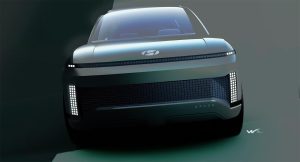
The Hyundai Seven Concept has long been expected to influence an eventual 3-row EV production model.
While the two Korean brands operate independently, Hyundai and Kia have largely synced up when it comes to their EV line-ups. So, with Kia now selling the big EV9, that’s left most industry-watchers waiting for Hyundai to follow up with its own 3-row crossover.
We won’t have much longer to wait, it turns out. The bigger of the two marques has confirmed it will add a seven-seater to its growing Ioniq family before the end of this year.
While Hyundai isn’t saying much about the new EV it’s widely expected to draw inspiration from the Seven Concept first revealed at the 2021 Los Angeles International Auto Show. And it is likely to be badged the 2025 Hyundai Ioniq 7.
Seven Concept
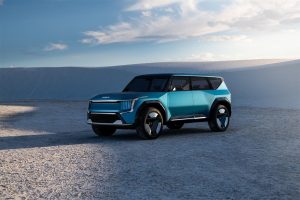
The Seven Concept was unveiled at the 2021 LA Auto Show — the same event that saw the debut of the Kia EV9.
The battery-powered counterpart to Hyundai’s big Palisade SUV, Seven was one in a series of show cars the automaker has used to signal the direction it will go as the Ioniq line-up rolls out.
It’s based on the same new E-GMP platform as the smaller Ioniq 5 – as well as the 3-row Kia EV9 SUV that just happened to debut at the 2021 L.A. Auto Show, as well. It’s a skateboard-like architecture that places the battery pack, motors and other drivetrain components below the load floor. That helps free up space normally devoted to the passenger compartment – while also lowering the SUV’s center of gravity.
Seven’s hood flowed into the front fascia, the SUV opting for a closed “grille,” as there’s no need to drive air into an engine compartment. But there are low-mounted active air flaps that open when cooling air is needed for the brakes, motors and battery pack. The front end was completed with a new take on the Parametric Pixel lighting used on more conventional Hyundai vehicles.
Expect a less radical design
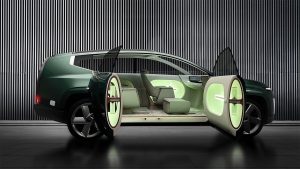
Expect to see a less radical design for the production Hyundai Ioniq 7, starting with more conventional doors.
At the time of the Seven Concept’s debut, Hyundai officials suggested the basic design of a production model would see some key differences – most notably to the show car’s “pillarless coach doors” that swing open to provide easy access to, and a yawning view of, the cabin.
In concept form, Seven featured an interior layout “unlike traditional SUVs, with swiveling lounge chairs and a curved bench seat,” the automaker explained at the time. “This seat arrangement can be customized depending on driver-controlled or autonomous driving modes.” The production Ioniq 7 will adopt a fairly conventional layout, closer to that of the gas-powered Palisade. But it’s likely to add some neat features like a floating center console up front and, possibly, a sliding console for the rear rows. But don’t expect the Seven Concept’s “Universal Island” console into which mobile versions of various home appliances could be mounted, such as a mini-fridge.
The show car also was envisioned as capable of fully autonomous driving. When activated, the aircraft-style “control stick” retracts and the driver’s seat can swivel to face other occupants. Hyundai is nowhere near ready to add fully autonomous capabilities to the Ioniq 7, however.
More Hyundai News
- First Drive: 2024 Hyundai Santa Fe
- First Drive: 2024 Hyundai Ioniq 5 N
- Exclusive: Hyundai Rethinks EV Plans
Ioniq 7
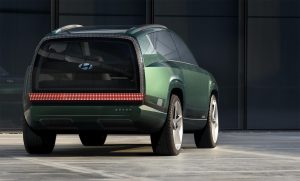
The 2025 Hyundai Ioniq 7 is likely to use the same drivetrain technology offered on the Kia EV9, including one and two-motor variants.
What little has been released – or leaked out – so far, suggests the production Hyundai Ioniq 7 will have a wheelbase of around 3,200 mm, or 126 inches. That’s 100 mm, or 4 inches, longer than the Kia EV9’s.
The two EVs also are expected to share drivetrains, meaning a mix of single and twin-motor packages. The Standard Range EV9 features a rear-mounted motor producing 215 hp. It’s paired with a 76.1 kWh battery pack yielding 230 miles per charge. With a 99.8 kWh pack that jumps to 304 miles.
The EV9 also is available with a twin-motor layout and the larger pack making 379 hp. And a GT variant is in the works that will jump to as much as 576 hp – though at the expense of some range.
The base Kia EV9 Light Short Range starts at $56,395, the high-line Wind package carrying an MSRP of $65,395. It’s likely the Hyundai Ioniq 7 will come in close to that range.

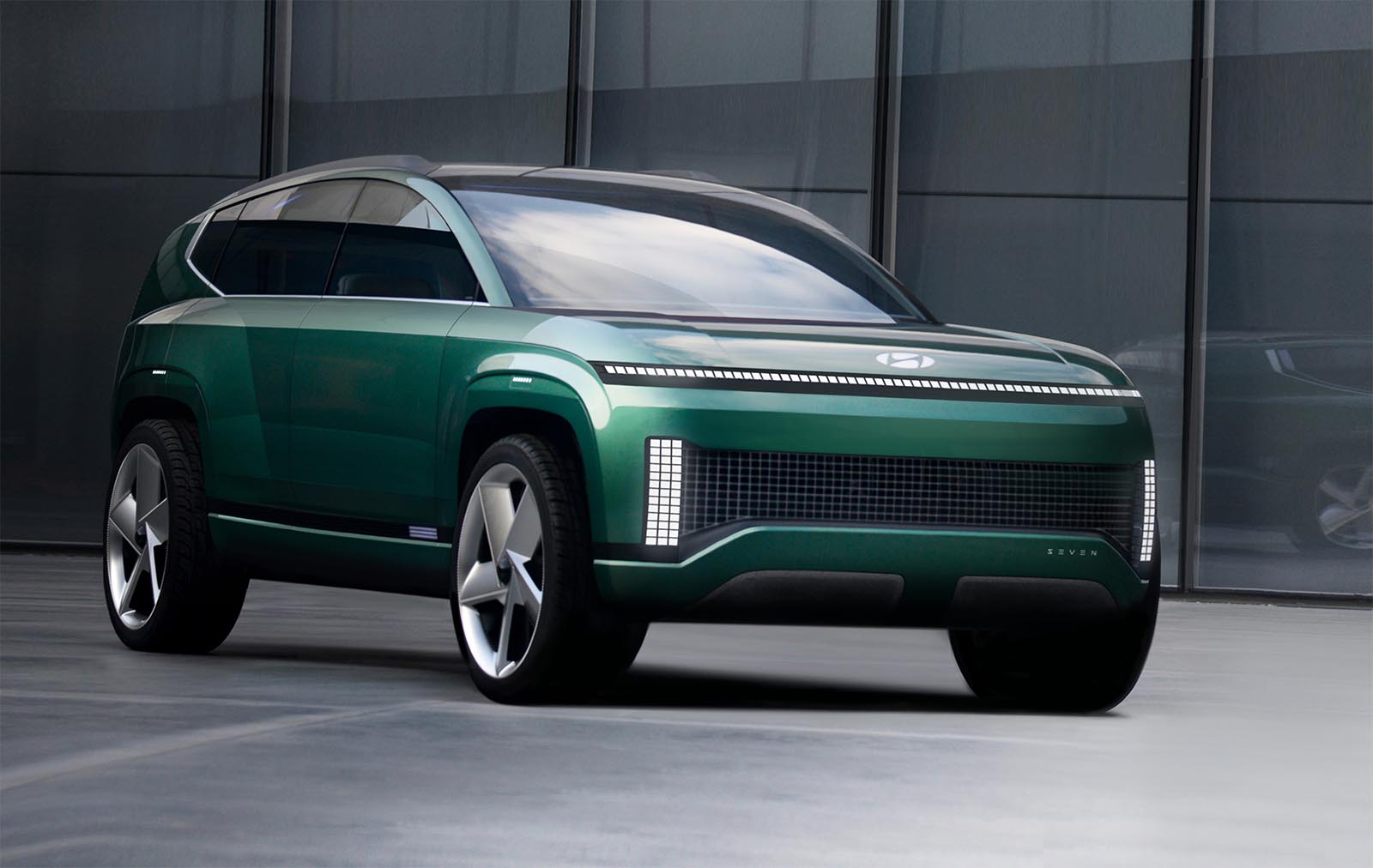



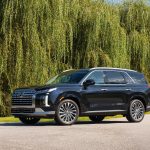
0 Comments